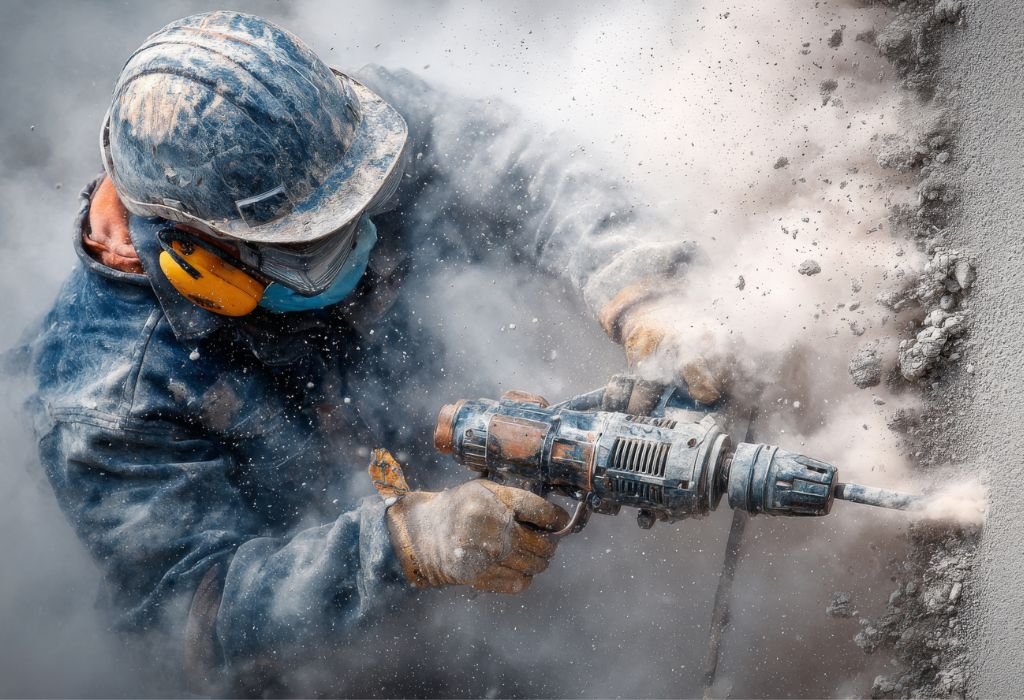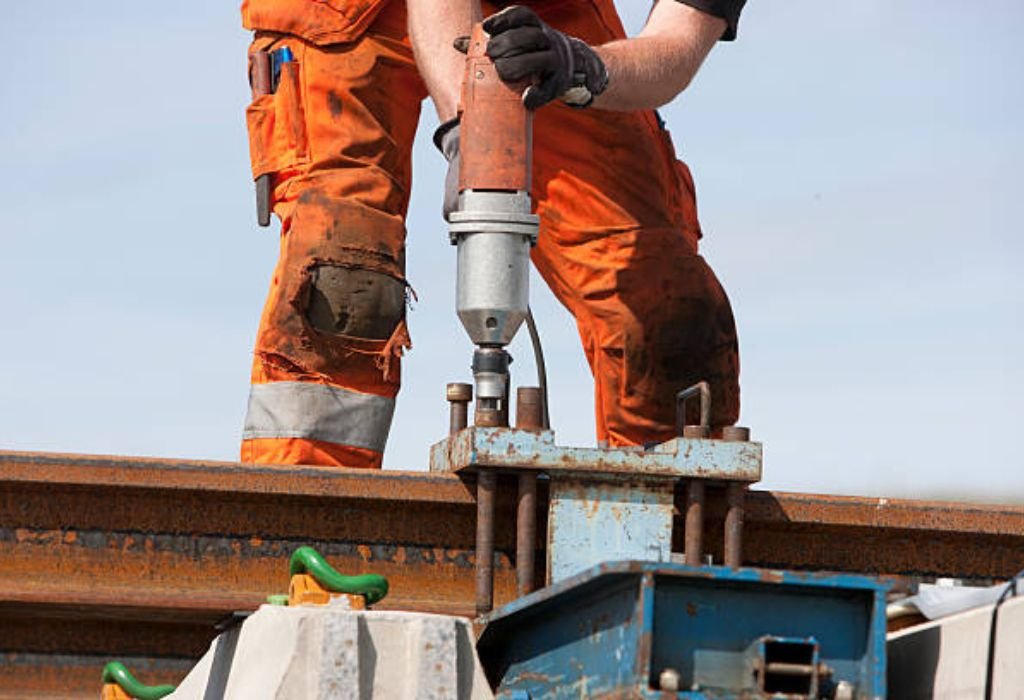Imagine standing in a workshop filled with the constant rattle of tools. One driver screams with sharp metallic impacts, while another hums softly, driving fasteners without the harsh vibration or noise.
The difference sparks curiosity—what makes one so much quieter?
That smoother option is the hydraulic impact driver, also known as an oil-pulse driver.
Unlike traditional models that rely on a hammer-and-anvil system, this tool uses a sealed oil chamber to deliver energy in controlled pulses.
The result is less vibration, lower decibel levels, and a tool designed for comfort during extended use.
Noise reduction is more than a luxury. Prolonged exposure to sounds above 85 decibels can cause hearing damage according to the CDC (source), and many standard impact drivers exceed this threshold. Manufacturers like Milwaukee and Ryobi promote their hydraulic drivers as being up to 50% quieter than conventional options (source).
For professionals working indoors or in occupied spaces, that difference is game-changing.
Beyond noise, hydraulic impact drivers also provide smoother screw starts, reduced cam-out, and better control in delicate tasks like cabinetry and finish work.
While they may not match the raw torque of the most powerful traditional impact drivers, they excel in precision and comfort.
This guide answers the question: what is a hydraulic impact driver, how does it work, and when should you use one?
By the end, you’ll know exactly why these tools are growing in popularity among both professionals and DIYers who value performance without compromise.
The Quick Answer: What Is a Hydraulic Impact Driver?

A hydraulic impact driver is a cordless power tool that uses fluid-filled pulses instead of direct metal-to-metal impacts. This design makes it significantly quieter and smoother.
The pulse mechanism applies torque over a slightly longer period, creating a softer impact. That means fasteners drive efficiently while user fatigue is reduced.
Is a hydraulic impact driver the same as a regular impact driver?
No, it uses oil pulses instead of hammer-and-anvil impacts.
Why is it quieter?
The oil cushions the blows, lowering decibel output.
Does it still drive screws quickly?
Yes, though heavy-duty torque tasks may be slower.
Is it stronger than a traditional impact?
Not usually—standard impacts often deliver higher peak torque.
Who benefits from using one?
Anyone working indoors, in tight spaces, or for long shifts needing reduced noise and vibration.
How the Mechanism Works: Oil-Pulse vs Hammer-and-Anvil
Traditional impact drivers use a hammer-and-anvil system where metal parts strike each other to create high-torque bursts. This generates loud noise and sharp vibration.
A hydraulic impact driver instead uses a sealed chamber filled with oil. The fluid cushions and transfers the energy, creating softer, longer torque pulses.
What fluid is inside the tool?
Most models use gear oil in a sealed unit.
Does the oil ever need replacing?
No, it is a closed, maintenance-free system.
Is the impact as powerful?
The pulses are smoother, but maximum torque is lower.
Does it affect speed?
Driving speed is similar for screws, though lag bolts may take longer.
Is maintenance different?
No, care is nearly identical to a regular impact driver.
Benefits You Notice: Noise, Vibration, Control
The biggest advantage is reduced noise. Hydraulic impact drivers are often marketed as up to 50% quieter, making them ideal for indoor or occupied spaces.
Vibration is also much lower. Softer pulses reduce strain on hands and wrists, which matters during long hours of use.
How much quieter are they?
Around half as loud as a traditional impact, depending on the model.
Does less vibration mean better comfort?
Yes, they cause less fatigue during extended tasks.
Are they more precise for small screws?
Yes, smoother pulses reduce cam-out and stripping.
Do they work well in cabinetry or finish work?
Yes, they provide better control in delicate tasks.
Are they safer for hearing?
Yes, lower decibel levels reduce hearing risk.
Where Hydraulic Impact Drivers Shine
Hydraulic drivers excel in interior work, cabinetry, and jobs where noise is a concern. They are also excellent for driving long screws smoothly without stripping.
For heavy-duty applications like large lag bolts or automotive lug nuts, they may struggle compared to traditional impact drivers.
Are they best for indoor use?
Yes, quiet operation makes them ideal indoors.
Do they work on decking screws?
Yes, they handle deck screws efficiently.
Can they drive self-tapping metal screws?
Yes, with better control and reduced cam-out.
Are they good for overhead work?
Yes, lower vibration reduces fatigue when working overhead.
Can they replace impact wrenches?
No, impact wrenches are stronger for bolts and nuts.
Real-World Models and Examples
Several brands offer popular hydraulic impact drivers. Milwaukee’s SURGE uses a FLUID-DRIVE mechanism, Makita offers Oil-Impulse models, and Ryobi markets QuietStrike.
Each claims quieter performance with smoother driving, though torque ratings are often lower than standard impact drivers.
Which brands make hydraulic drivers?
Milwaukee, Makita, Ryobi, and DeWalt.
Are they more expensive?
Yes, hydraulic models usually cost more.
Do they have brushless motors?
Many modern models include brushless efficiency.
Are they compatible with the same batteries?
Yes, they fit into the same brand’s ecosystem.
Are they widely available?
Yes, most major tool retailers carry them.
Specs That Matter: RPM, IPM, Torque
Hydraulic drivers often have lower peak torque but maintain excellent driving performance in real tasks. RPM and IPM specs differ slightly but are balanced for smooth delivery.
Brushless motors improve efficiency and runtime, and multi-speed modes help tailor performance to each task.
What does RPM measure?
Rotations per minute, showing how fast the bit spins.
What does IPM measure?
Impacts per minute, showing the pulse rate.
Do higher specs always mean better performance?
Not necessarily—pulse delivery also matters.
Is torque the most important spec?
It matters, but smooth control is equally valuable.
Do hydraulic drivers strip fewer screws?
Yes, smoother pulses reduce stripping.
Buyer’s Guide: Should You Get One?

Hydraulic impact drivers are not for everyone. Professionals who prioritize quiet operation and comfort will benefit most, while framers and deck builders may prefer the raw torque of traditional impacts.
Many pros carry both—a hydraulic driver for interior work and a regular impact for heavy-duty fastening.
Should DIYers buy one?
Yes, especially if working indoors often.
Are they worth the higher price?
Yes, if noise and comfort matter.
Do contractors use both types?
Yes, many keep both for flexibility.
Which voltage is best?
18V/20V Max offers more power; 12V is compact for light work.
Is it better than a drill driver?
Yes, for driving fasteners quickly and smoothly.
Care and Maintenance
Hydraulic impact drivers require little extra care. Keep batteries charged, bits fresh, and store tools in dry conditions.
The sealed oil chamber means there is no user-serviceable maintenance.
Do they need oil refills?
No, the unit is sealed.
Can they be used in cold weather?
Yes, though performance may feel slightly different.
Should bits be impact-rated?
Yes, always use bits designed for impact tools.
How long do they last?
With proper care, years of reliable service.
Do batteries affect performance?
Yes, larger packs reduce voltage drop under load.
Conclusion
So, what is a hydraulic impact driver? It is an oil-pulse powered driver that replaces hammer-and-anvil strikes with fluid-driven pulses. This makes it quieter, smoother, and more comfortable to use.
Hydraulic impact drivers shine in cabinetry, interior jobs, and anywhere noise control is important. While they may not replace traditional impacts for heavy-duty fastening, they are an excellent complement.
If you value reduced noise, lower vibration, and precision control, investing in a hydraulic impact driver is a smart choice.

I’m John F. Nicholas, the founder, lead writer, and drill enthusiast behind 101drill.com. With years of hands-on experience in power tools and DIY projects, I created this platform to share practical knowledge, expert tips, and real-world insights to help others master the art of drilling.
